-
 Bitcoin
Bitcoin $106,731.2224
-1.05% -
 Ethereum
Ethereum $2,444.9804
-1.20% -
 Tether USDt
Tether USDt $1.0003
0.01% -
 XRP
XRP $2.1882
0.09% -
 BNB
BNB $651.1435
-0.61% -
 Solana
Solana $148.3252
-2.09% -
 USDC
USDC $1.0000
0.01% -
 TRON
TRON $0.2787
0.55% -
 Dogecoin
Dogecoin $0.1598
-3.16% -
 Cardano
Cardano $0.5520
-2.43% -
 Hyperliquid
Hyperliquid $39.0960
-2.64% -
 Bitcoin Cash
Bitcoin Cash $516.9519
2.98% -
 Sui
Sui $2.7011
-2.95% -
 Chainlink
Chainlink $13.0582
-1.71% -
 UNUS SED LEO
UNUS SED LEO $8.9250
-2.53% -
 Stellar
Stellar $0.2359
-0.18% -
 Avalanche
Avalanche $17.3856
-3.73% -
 Toncoin
Toncoin $2.8095
-3.56% -
 Shiba Inu
Shiba Inu $0.0...01121
-1.95% -
 Litecoin
Litecoin $85.2795
-0.85% -
 Hedera
Hedera $0.1471
-2.15% -
 Monero
Monero $319.8004
1.12% -
 Dai
Dai $1.0001
0.01% -
 Ethena USDe
Ethena USDe $1.0001
0.02% -
 Bitget Token
Bitget Token $4.5344
-1.07% -
 Polkadot
Polkadot $3.3224
-2.96% -
 Uniswap
Uniswap $6.9697
-2.75% -
 Aave
Aave $266.1658
-2.25% -
 Pepe
Pepe $0.0...09414
-3.41% -
 Pi
Pi $0.4913
-3.29%
Is the high double cross star accompanied by reduced volume a signal of reaching the top?
The high double cross star, marked by two consecutive doji candles after an uptrend, signals potential bearish reversal in crypto markets.
Jul 01, 2025 at 11:14 am
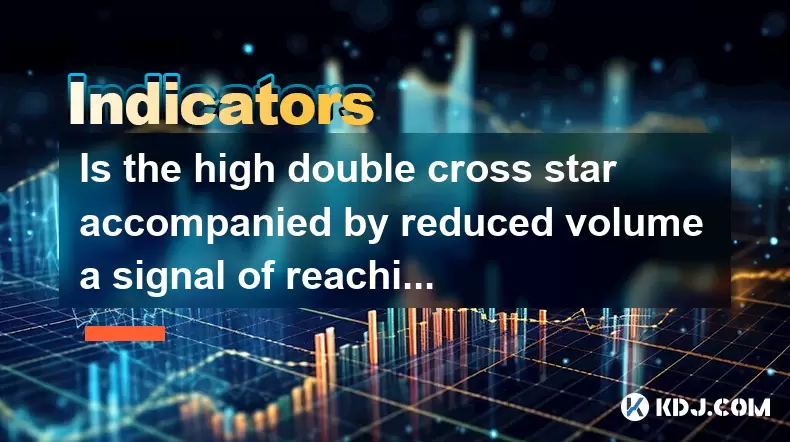
What Is a High Double Cross Star Pattern?
The high double cross star is a candlestick pattern often observed in technical analysis within the cryptocurrency market. It typically consists of two doji candles that appear consecutively after a strong uptrend. A doji is a candle where the opening and closing prices are nearly equal, indicating indecision among traders. When this occurs twice in succession at a high price level, it's referred to as the high double cross star.
This pattern suggests that buying pressure has weakened, and there may be an impending reversal from an uptrend to a downtrend. However, it should not be interpreted in isolation. Traders must also consider other signals such as volume, moving averages, and support/resistance levels before making decisions.
Important:
The term "high" in this context implies that the pattern forms near recent resistance or all-time highs on the chart.How Does Volume Play a Role in This Pattern?
Volume is a critical component when analyzing candlestick patterns like the high double cross star. In a typical bullish trend, rising prices are accompanied by increasing volume. Conversely, if a high double cross star appears with reduced volume, it can indicate waning interest from buyers.
- Reduced volume during the formation of the pattern means fewer trades are executed, which may signal that momentum is fading.
- High volume would suggest active trading but could mean either panic selling or aggressive buying — neither of which aligns with the nature of a doji pattern.
Therefore, when traders observe a high double cross star accompanied by shrinking volume, they interpret it as a sign that bulls are losing control and bears may soon take over.
Is the High Double Cross Star Always a Top Signal?
While the high double cross star is generally seen as a bearish reversal signal, it is not always a definitive top indicator. Its reliability depends heavily on the surrounding market conditions and confirmation from other indicators.
- If the pattern appears after a prolonged uptrend and is followed by a bearish engulfing candle, it strengthens the reversal signal.
- If it forms in a sideways or consolidating market, it may simply indicate market indecision, not necessarily a reversal.
It’s essential to wait for additional confirmation before taking any action based solely on this pattern. Some traders use tools like MACD crossovers or moving average breakdowns to validate the potential reversal.
How to Confirm the Reversal Signal
To confirm whether the high double cross star with low volume is indeed signaling a top, traders can follow these steps:
- Observe the next candle: If the candle following the pattern closes significantly lower, especially below the midpoint of the prior trend, it confirms weakness.
- Check key support levels: If the price breaks below a major support zone, it increases the likelihood of a sustained downtrend.
- Analyze volume again: If volume remains low or drops further after the pattern, it supports the idea of diminishing buyer interest.
- Use oscillators: Tools like RSI (Relative Strength Index) or Stochastic can help identify overbought conditions that align with the pattern.
These steps help filter out false signals and provide more reliable entry or exit points in volatile crypto markets.
Common Misinterpretations of This Pattern
One of the most common mistakes traders make is interpreting the high double cross star as an immediate sell signal without waiting for confirmation. In highly volatile assets like cryptocurrencies, false reversals are frequent.
Another misunderstanding arises when traders ignore volume dynamics. For example, a double cross star appearing with high volume might actually indicate a consolidation phase rather than a reversal.
Also, many beginners confuse the high double cross star with similar patterns like the morning star or evening star, which have different implications depending on their location in the trend.
Real-World Example in Crypto Markets
Let’s consider a real-world scenario involving Bitcoin:
After a sharp rally pushing BTC to $65,000, the price stalls. Two consecutive doji candles form — the high double cross star — and each day’s volume declines significantly compared to the previous uptrend.
In this case:
- The first doji shows hesitation.
- The second doji confirms the lack of direction.
- Subsequent candles begin to close lower, confirming the reversal.
Traders who recognized the high double cross star with decreasing volume had a chance to exit long positions or initiate short trades around the $65,000 level.
However, if the price rebounds after the pattern without breaking key support, the reversal signal becomes invalid.
FAQ: Frequently Asked Questions
Q: Can the high double cross star occur in downtrends?
A: While it typically appears at the end of uptrends, variations of the pattern can sometimes appear in downtrends, though they are less significant in those contexts.
Q: What timeframes work best for identifying this pattern?
A: Higher timeframes like 4-hour or daily charts tend to give more reliable signals due to reduced noise and stronger volume data.
Q: Should I rely solely on this pattern for making trading decisions?
A: No. It should be used in conjunction with other tools such as volume analysis, support/resistance levels, and technical indicators.
Q: How often does this pattern successfully predict a top in crypto markets?
A: Success rates vary, but in historically volatile markets like crypto, it works best when combined with volume and follow-through confirmation.
Disclaimer:info@kdj.com
The information provided is not trading advice. kdj.com does not assume any responsibility for any investments made based on the information provided in this article. Cryptocurrencies are highly volatile and it is highly recommended that you invest with caution after thorough research!
If you believe that the content used on this website infringes your copyright, please contact us immediately (info@kdj.com) and we will delete it promptly.
- Altcoins in June 2025: Data, Trends, and What's Next for Crypto
- 2025-07-01 21:30:12
- SUI Price Breakout Watch: Will 2025 Forecasts Hit the Mark?
- 2025-07-01 21:30:12
- BTCBULL: Riding Bitcoin's Bull Run to Crypto Glory
- 2025-07-01 20:30:11
- DOJ Cracks Down: North Korea's Crypto Theft Ring Exposed
- 2025-07-01 20:50:11
- Bitcoin's July Jolt: Will We See a New ATH?
- 2025-07-01 20:30:11
- Bitcoin Cash Price Surges to 8-Month High: Is $1,700 Next?
- 2025-07-01 20:35:12
Related knowledge
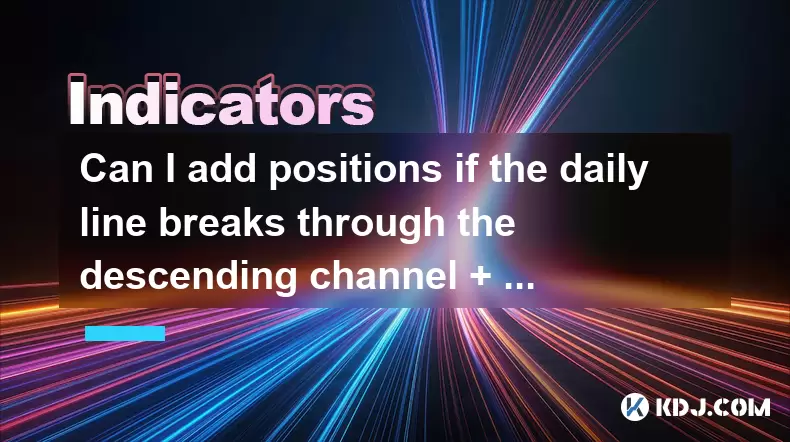
Can I add positions if the daily line breaks through the descending channel + the 30-minute moving average is in a bullish arrangement?
Jun 30,2025 at 11:00pm
Understanding the Descending Channel BreakoutWhen a daily line breaks through a descending channel, it indicates a potential shift in market sentiment from bearish to bullish. A descending channel is formed by drawing two parallel trendlines, where the upper trendline connects the lower highs and the lower trendline connects the lower lows. A breakout o...
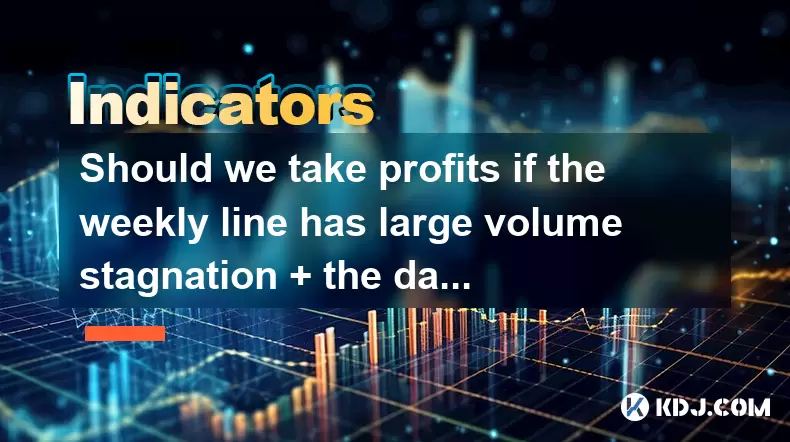
Should we take profits if the weekly line has large volume stagnation + the daily RSI top divergence?
Jul 01,2025 at 05:22pm
Understanding Weekly Volume Stagnation in Cryptocurrency TradingIn cryptocurrency trading, weekly volume stagnation refers to a situation where the total trading volume over a week remains relatively flat or shows no significant increase despite price movements. This phenomenon can indicate that institutional or large traders are not actively participat...
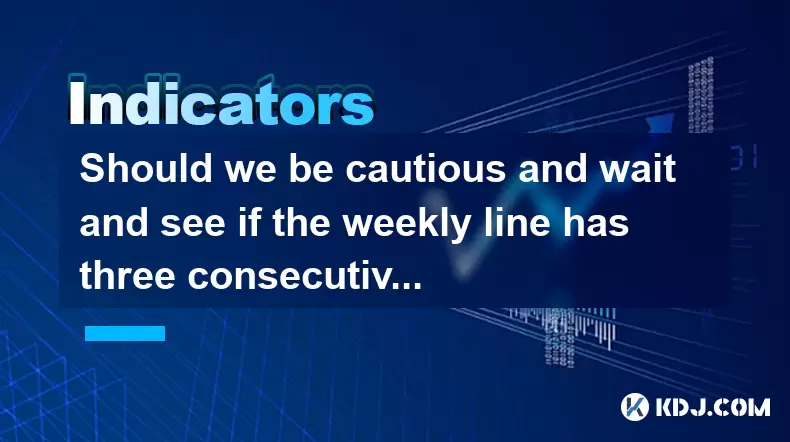
Should we be cautious and wait and see if the weekly line has three consecutive Yin lines + the daily MACD green column enlarges?
Jul 01,2025 at 12:42am
Understanding the Weekly Three Consecutive Yin Lines PatternIn technical analysis, three consecutive Yin lines on a weekly chart indicate a strong bearish trend. Each Yin line represents a week where the closing price is lower than the opening price, signaling consistent selling pressure. When this pattern appears three times in succession, it often sug...
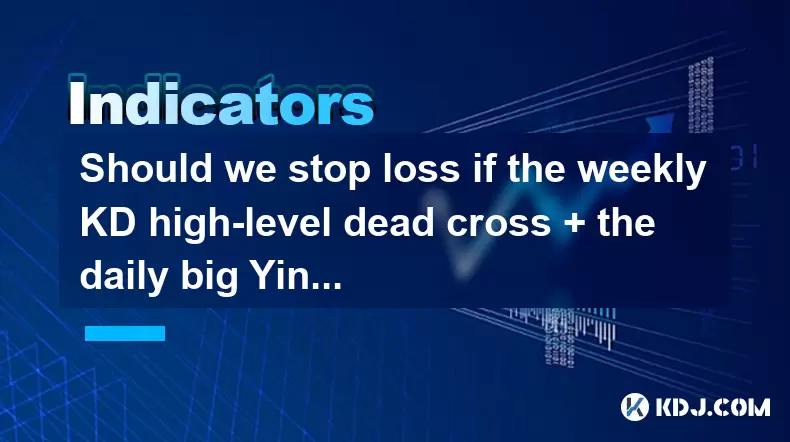
Should we stop loss if the weekly KD high-level dead cross + the daily big Yin line breaks?
Jul 01,2025 at 09:49pm
Understanding the Weekly KD High-Level Dead CrossIn technical analysis, KD (K-D indicator) is a momentum oscillator that helps traders identify overbought or oversold conditions in the market. The weekly KD high-level dead cross occurs when both the K-line and D-line are above 80 (indicating overbought territory), and the K-line crosses below the D-line...
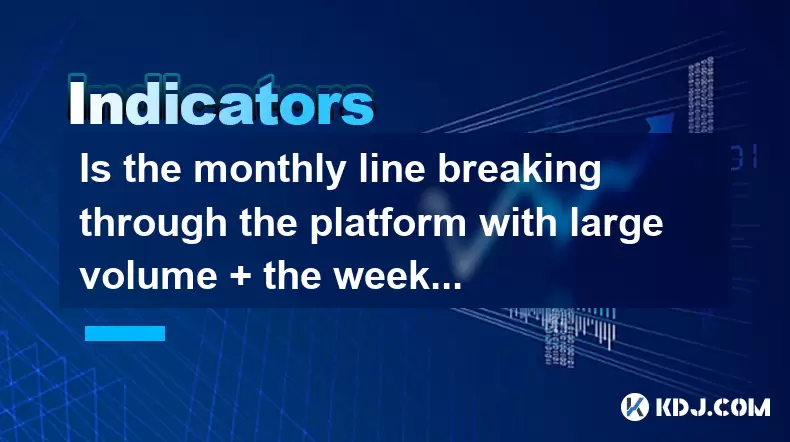
Is the monthly line breaking through the platform with large volume + the weekly moving average converging and then diverging and bullish?
Jul 01,2025 at 05:01pm
Understanding Monthly Line Breakouts in CryptocurrencyIn the world of cryptocurrency trading, monthly line breakouts are significant events that can indicate long-term trends. When a cryptocurrency's price breaks above a key platform or consolidation zone on the monthly chart, especially with large volume, it often signals strong institutional or whale ...
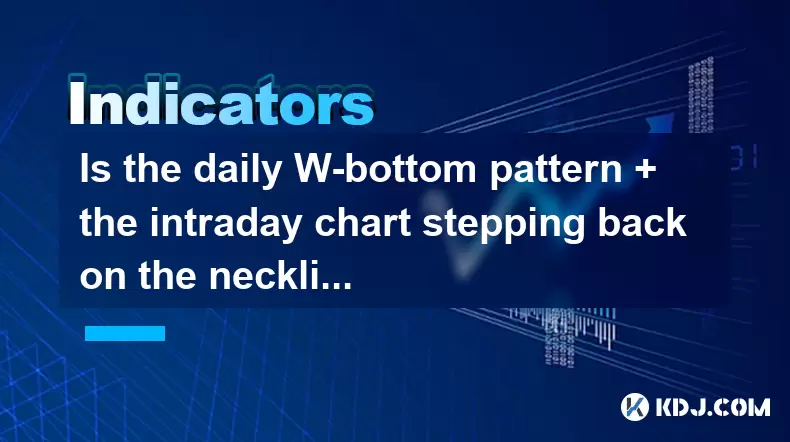
Is the daily W-bottom pattern + the intraday chart stepping back on the neckline a buying point?
Jul 01,2025 at 03:22pm
Understanding the W-Bottom Pattern in Cryptocurrency TradingIn technical analysis, the W-bottom pattern is a popular reversal chart formation that signals a potential bullish trend. It typically appears after a downtrend and consists of two distinct lows (the 'W' shape) with a resistance level (neckline) connecting the two peaks. In the context of crypt...

Can I add positions if the daily line breaks through the descending channel + the 30-minute moving average is in a bullish arrangement?
Jun 30,2025 at 11:00pm
Understanding the Descending Channel BreakoutWhen a daily line breaks through a descending channel, it indicates a potential shift in market sentiment from bearish to bullish. A descending channel is formed by drawing two parallel trendlines, where the upper trendline connects the lower highs and the lower trendline connects the lower lows. A breakout o...

Should we take profits if the weekly line has large volume stagnation + the daily RSI top divergence?
Jul 01,2025 at 05:22pm
Understanding Weekly Volume Stagnation in Cryptocurrency TradingIn cryptocurrency trading, weekly volume stagnation refers to a situation where the total trading volume over a week remains relatively flat or shows no significant increase despite price movements. This phenomenon can indicate that institutional or large traders are not actively participat...

Should we be cautious and wait and see if the weekly line has three consecutive Yin lines + the daily MACD green column enlarges?
Jul 01,2025 at 12:42am
Understanding the Weekly Three Consecutive Yin Lines PatternIn technical analysis, three consecutive Yin lines on a weekly chart indicate a strong bearish trend. Each Yin line represents a week where the closing price is lower than the opening price, signaling consistent selling pressure. When this pattern appears three times in succession, it often sug...

Should we stop loss if the weekly KD high-level dead cross + the daily big Yin line breaks?
Jul 01,2025 at 09:49pm
Understanding the Weekly KD High-Level Dead CrossIn technical analysis, KD (K-D indicator) is a momentum oscillator that helps traders identify overbought or oversold conditions in the market. The weekly KD high-level dead cross occurs when both the K-line and D-line are above 80 (indicating overbought territory), and the K-line crosses below the D-line...

Is the monthly line breaking through the platform with large volume + the weekly moving average converging and then diverging and bullish?
Jul 01,2025 at 05:01pm
Understanding Monthly Line Breakouts in CryptocurrencyIn the world of cryptocurrency trading, monthly line breakouts are significant events that can indicate long-term trends. When a cryptocurrency's price breaks above a key platform or consolidation zone on the monthly chart, especially with large volume, it often signals strong institutional or whale ...

Is the daily W-bottom pattern + the intraday chart stepping back on the neckline a buying point?
Jul 01,2025 at 03:22pm
Understanding the W-Bottom Pattern in Cryptocurrency TradingIn technical analysis, the W-bottom pattern is a popular reversal chart formation that signals a potential bullish trend. It typically appears after a downtrend and consists of two distinct lows (the 'W' shape) with a resistance level (neckline) connecting the two peaks. In the context of crypt...
See all articles

























































































